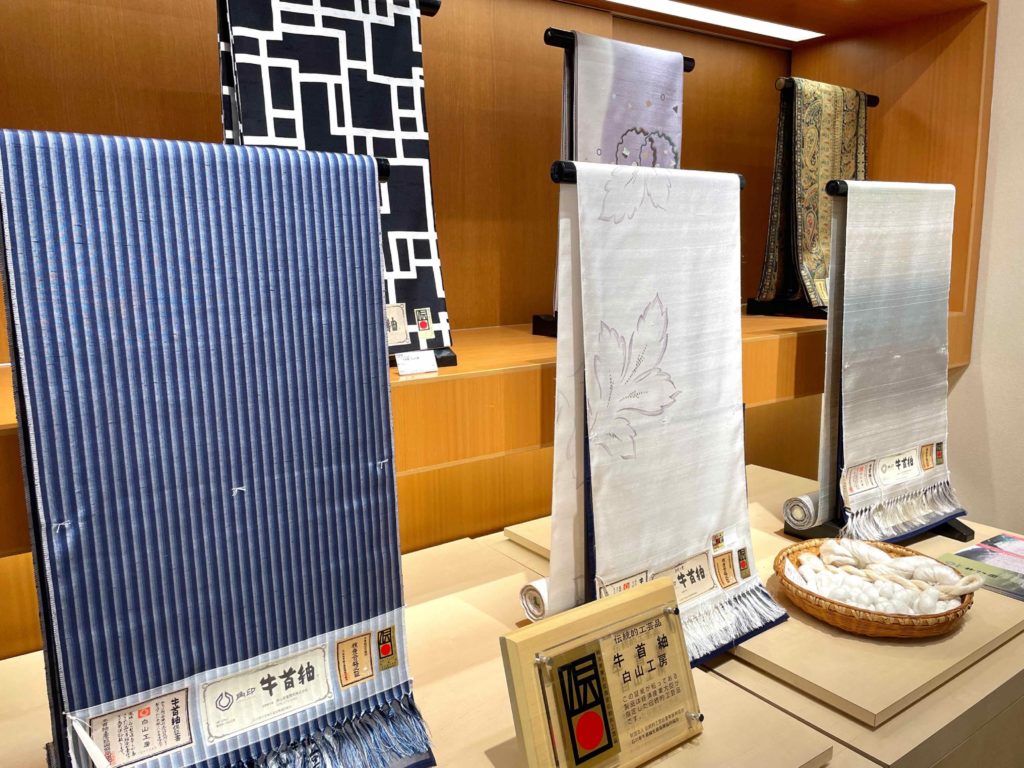牛首紬
Pronunciation: Ushikubi-tsumugi
Production area: Hakusan City, Ishikawa Prefecture
Ushikubi-tsumugi is a silk fabric with a soft, refined luster and distinctive slubs that create rustic beauty. Renowned for its strength, it is also called “Kuginuki-tsumugi” (nail-pulling tsumugi), said to be tough enough to pierce a nail without tearing. It is woven using tama-mayu (double cocoons), which account for only 2–3% of total cocoons, making it an exceptionally luxurious textile. The intertwined fibers of tama-mayu produce both durability and a three-dimensional texture. In the Shiramine area (formerly Ushikubi Village), sericulture, silk reeling, and weaving have been practiced for centuries. By the late Edo period, tsumugi woven from tama-mayu and waste cocoons became known in Kyoto and gradually throughout Japan under the name Ushikubi-tsumugi. Its production peaked in the Taisho era, but later declined due to economic downturns. Today, only two weaving houses continue to preserve this tradition. The techniques are still handed down by local villagers, and Ushikubi-tsumugi is recognized as an Intangible Cultural Property of Ishikawa Prefecture.
See Also: Traditional Craftsmanship Vol.4 “Ushikubi Tsumugi” | Hakusan Kobo




















